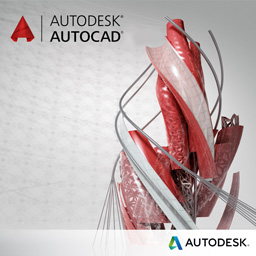
1.1 Starting the Software
1.2 User Interface
1.3 Working with Commands
1.4 Cartesian Workspace
1.5 Opening an Existing Drawing File
1.6 Viewing Your Drawing
1.7 Saving Your Work
Chapter 2 Basic Drawing & Editing Commands
2.1 Drawing Lines
2.2 Erasing Objects
2.3 Drawing Lines with Polar Tracking
2.4 Drawing Rectangles
2.5 Drawing Circles
2.6 Undo and Redo Actions
Chapter 3 Projects – Creating a Simple Drawing
3.1 Create a Simple Drawing
3.2 Create Simple Shapes
Chapter 4 Drawing Precision in AutoCAD
4.1 Using Running Object Snaps
4.2 Using Object Snap Overrides
4.3 Polar Tracking at Angles
4.4 Object Snap Tracking
4.5 Drawing with Snap and Grid
Chapter 5 Making Changes in Your Drawing
5.1 Selecting Objects for Editing
5.2 Moving Objects
5.3 Copying Objects
5.4 Rotating Objects
5.5 Scaling Objects
5.6 Mirroring Objects
5.7 Editing with Grips
Chapter 6 Projects – Making Your Drawings More Precise
6.1 Schematic Project: Electronics Diagram
6.2 Architectural Project: Landscape
6.3 Mechanical Project (with Polar & Tracking)
6.4 Mechanical Project: Surge Protector
6.5 Mechanical Project: Satellite
7.1 Creating New Drawings With Templates
7.2 What are Layers
7.3 Layer States
7.4 Changing an Object’s Layer
Chapter 8 Advanced Object Types
8.1 Drawing Arcs
8.2 Drawing Polylines
8.3 Editing Polylines
8.4 Drawing Polygons
8.5 Drawing Ellipses
Chapter 9 Analyzing Model and Object Properties
9.1 Working with Object Properties
9.2 Measuring Objects
Chapter 10 Projects – Drawing Organization & Information
10.1 Architectural Project
10.2 Mechanical Project
Chapter 11 Advanced Editing Commands
11.1 Trimming and Extending Objects
11.2 Stretching Objects
11.3 Creating Fillets and Chamfers
11.4 Offsetting Objects
11.5 Creating Arrays of Objects
Chapter 12 Inserting Blocks
12.1 What are Blocks?
12.2 Inserting Blocks
12.3 Working with Dynamic Blocks
12.4 Inserting Blocks with DesignCenter
12.5 Inserting Blocks with Content Explorer
Chapter 13 Projects – Creating More Complex Objects
13.1 Mechanical Project
13.2 Architectural Project
14.1 Printing Concepts
14.2 Working in Layouts
14.3 Copying Layouts
14.4 Creating Layout Viewports
14.5 Guidelines for Layouts
Chapter 15 Printing Your Drawing
15.1 Printing Layouts
15.2 Printing from the Model Tab
Chapter 16 Projects – Preparing to Print
16.1 Mechanical Project
16.2 Architectural Project
Chapter 17 Text
17.1 Working with Annotations
17.2 Adding Text in a Drawing
17.3 Modifying Multiline Text
17.4 Formatting Multiline Text
17.5 Adding Notes with Leaders to Your Drawing
17.6 Creating Tables
17.7 Modifying Tables
Chapter 18 Hatching
18.1 Hatching
18.2 Editing Hatches
Chapter 19 Adding Dimensions
19.1 Dimensioning Concepts
19.2 Adding Linear Dimensions
19.3 Adding Radial and Angular Dimensions
19.4 Editing Dimensions
Chapter 20: Projects – Annotating Your Drawing
20.1 Mechanical Project
20.2 Architectural Project
AutoCAD Essential Training Syllabus / AutoCAD Training courses
Description:
Our AutoCAD training courses have few different level, including essential, advanced, and 3D modelling.
AutoCAD Essential Training enables students to create a basic 2D drawing in the AutoCAD software. Even at this fundamental level, the AutoCAD software is one of the most sophisticated computer applications that you are likely to encounter. Therefore learning to use it can be challenging.
This training covers the essential core topics for working with the AutoCAD software. The teaching strategy is to start with a few basic tools that enable the student to create and edit a simple drawing, and then continue to develop those tools. More advanced tools are also introduced throughout the training.
Duration:
3 Days
Prerequisites:
- A working knowledge of basic design/drafting procedures and terminology.
- A working knowledge of your operating system.
Objectives:
This Autocad training course (Essential) has following learning objectives:
- Understanding the AutoCAD workspace and user interface.
- Using basic drawing, editing, and viewing tools.
- Organizing drawing objects on layers.
- Inserting reusable symbols (blocks).
- Preparing a layout to be plotted.
- Adding text, hatching, and dimensions.
HRDF Claimable:
 As a Human Resources Development Fund (HRDF) registered training center, our courses/ training, including AutoCAD Training Courses are HRDF claimable.
As a Human Resources Development Fund (HRDF) registered training center, our courses/ training, including AutoCAD Training Courses are HRDF claimable.
Authorized Autodesk Training Center:
![]() Trainee / Students completed training will receive Certificate of Completion from Autodesk.
Trainee / Students completed training will receive Certificate of Completion from Autodesk.
